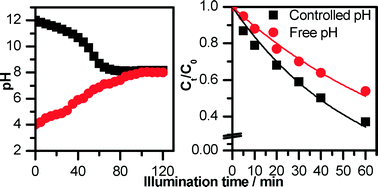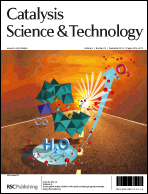Enhancing the photocatalytic activity of TiO2 by pH control: a case study for the degradation of EDTA
Abstract
The photocatalytic degradation of EDTA has been investigated in detail under pH-controlled conditions employing the pH-stat technique. The results indicate that by holding the pH constant (i.e., at pH 5) during the experiment, the photocatalytic degradation rate is enhanced by ca. 50% as compared with measurements carried out under “free-floating” pH conditions, i.e., with the pH being adjusted to 5 at the beginning of the reaction. The higher photocatalytic activity at a constant pH of 5 is explained by the higher adsorptivity of EDTA on TiO2 at this pH as evinced from the dark adsorption measurements. Investigations carried out at different light intensities indicate that the rate of the photocatalytic EDTA degradation is proportional to the square root of the light intensity at moderate values becoming independent from the light intensity at higher values. The activation energies for the photocatalytic EDTA degradation and for its complete mineralization, respectively, have been determined to be 21.54 ± 1.4 kJ mol−1 and 16.4 ± 0.5 kJ mol−1, respectively, employing the Arrhenius data treatment. This difference is explained by the fact that the intermediates formed upon the photocatalytic EDTA degradation are less resistant against their photocatalytic mineralization than the parent molecule.


 Please wait while we load your content...
Please wait while we load your content...